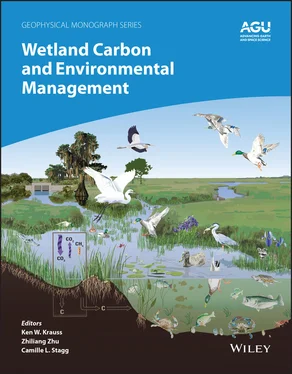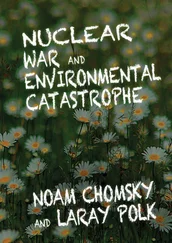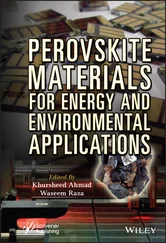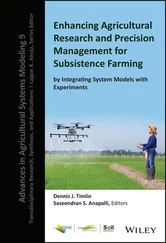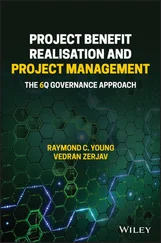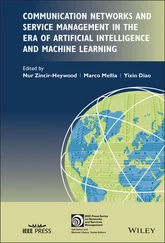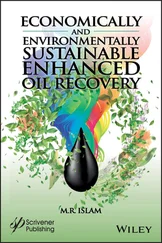1 Cover
2 Series Page
3 Title Page
4 Copyright Page
5 List of Contributors
6 Foreword
7 Preface REFERENCES
8 Part I: Introduction to Carbon Management in Wetlands 1 A Review of Global Wetland Carbon Stocks and Management Challenges 1.1. INTRODUCTION 1.2. PAST CHANGES IN WETLAND CARBON STOCKS 1.3. METHODOLOGIES 1.4. ESTIMATES OF WETLAND STOCKS BY WETLAND TYPES 1.5. GLOBAL SUMMARY OF WETLAND CARBON STOCKS 1.6. FUTURE CHANGES IN WETLAND CARBON STOCKS 1.7. UNCERTAINTIES AND FUTURE DIRECTIONS ACKNOWLEDGMENTS REFERENCES 2 Wetland Carbon in the United States: Conditions and Changes 2.1. INTRODUCTION 2.2. WETLAND DISTRIBUTION, TYPES, AND CARBON STOCK IN THE UNITED STATES 2.3. EFFECTS OF LAND USE CHANGE IN RECENT DECADES ON WETLAND CARBON 2.4. IMPACT OF WILDFIRE ON WETLAND CARBON 2.5. U.S. WETLAND MANAGEMENT AS A CARBON‐RELEVANT LANDCOVER CHANGE 2.6. OUTLOOK AND FUTURE RESEARCH NEEDS REFERENCES 3 Biogeochemistry of Wetland Carbon Preservation and Flux 3.1. INTRODUCTION 3.2. RADIATIVE BALANCES AND RADIATIVE FORCING 3.3. FACTORS CONTROLLING CARBON PRESERVATION 3.4. GREENHOUSE GAS EMISSIONS AND OTHER LOSSES 3.5. MANAGEMENT OF WETLAND CARBON PRESERVATION AND FLUX 3.6. CONCLUSIONS ACKNOWLEDGMENTS REFERENCES 4 An Overview of the History and Breadth of Wetland Management Practices 4.1. INTRODUCTION 4.2. DEVELOPMENT OF WETLAND MANAGEMENT 4.3. MANAGEMENT REQUIRES PROTECTION 4.4. WETLAND MANAGEMENT PRACTICES 4.5. CONCLUSIONS ACKNOWLEDGMENTS REFERENCES
9 Part II: Tidal Wetlands 5 Carbon Flux, Storage, and Wildlife Co‐Benefits in a Restoring Estuary 5.1. INTRODUCTION 5.2. METHODS 5.3. RESULTS 5.4. DISCUSSION 5.5. IMPLICATIONS FOR POLICY AND MANAGEMENT 5.6. CONCLUSIONS ACKNOWLEDGMENTS REFERENCES 6 Enhancing Carbon Storage in Mangrove Ecosystems of China through Sustainable Restoration and Aquaculture Actions 6.1. INTRODUCTION 6.2. METHODS 6.3. RESULTS 6.4. DISCUSSION 6.5. CONCLUSIONS ACKNOWLEDGMENTS REFERENCES 7 Potential for Carbon and Nitrogen Sequestration by Restoring Tidal Connectivity and Enhancing Soil Surface Elevations in Denuded and Degraded South Florida Mangrove Ecosystems 7.1. INTRODUCTION 7.2. METHODS 7.3. RESULTS 7.4. DISCUSSION 7.5. MANAGEMENT APPLICATION 7.6. CONCLUSIONS ACKNOWLEDGMENTS DATA AVAILABILITY REFERENCES 8 Optimizing Carbon Stocks and Sedimentation in Indonesian Mangroves under Different Management Regimes 8.1. INTRODUCTION 8.2. ASSESSING MANGROVE PROPERTIES 8.3. MANGROVE MANAGEMENT AND CARBON DYNAMICS 8.4. DISCUSSION 8.5. MANAGEMENT IMPLICATIONS ACKNOWLEDGMENTS REFERENCES 9 Hydrological Rehabilitation and Sediment Elevation as Strategies to Restore Mangroves in Terrigenous and Calcareous Environments in Mexico 9.1. INTRODUCTION 9.2. MATERIALS AND METHODS 9.3. RESULTS 9.4. DISCUSSION 9.5. CONCLUSIONS ACKNOWLEDGMENTS REFERENCES 10 Controlling Factors of Long‐Term Carbon Sequestration in the Coastal Wetland Sediments of the Modern Yellow River Delta Area, China 10.1. INTRODUCTION 10.2. MATERIALS AND METHODS 10.3. RESULTS 10.4. DISCUSSION 10.5. CONCLUSIONS ACKNOWLEDGMENTS REFERENCES 11 The Impacts of Aquaculture Activities on Greenhouse Gas Dynamics in the Subtropical Estuarine Zones of China 11.1. INTRODUCTION 11.2. METHODS 11.3. RESULTS 11.4. DISCUSSION 11.5. CONCLUSIONS ACKNOWLEDGMENTS REFERENCES 12 Soil and Aboveground Carbon Stocks in a Planted Tropical Mangrove Forest (Can Gio, Vietnam) 12.1. INTRODUCTION 12.2. METHODS 12.3. RESULTS 12.4. DISCUSSION 12.5. CONCLUSIONS ACKNOWLEDGMENTS REFERENCES
10 Part III: Non‐Tidal and Inland Wetlands 13 Carbon Flux Trajectories and Site Conditions from Restored Impounded Marshes in the Sacramento‐San Joaquin Delta 13.1. INTRODUCTION 13.2. METHODS 13.3. RESULTS 13.4. DISCUSSION 13.5. CONCLUSIONS ACKNOWLEDGMENTS REFERENCES 14 Land Management Strategies Influence Soil Organic Carbon Stocks of Prairie Potholes of North America 14.1. INTRODUCTION 14.2. METHODS 14.3. RESULTS 14.4. DISCUSSION 14.5. CONCLUSIONS ACKNOWLEDGMENTS REFERENCES 15 Environmental and Human Drivers of Carbon Sequestration and Greenhouse Gas Emissions in the Ebro Delta, Spain 15.1. INTRODUCTION 15.2. WETLANDS AND RICE FIELDS IN THE EBRO DELTA 15.3. CARBON DYNAMICS IN EBRO DELTA WETLANDS 15.4. CARBON DYNAMICS IN EBRO DELTA RICE FIELDS 15.5. AN ECOSYSTEM PERSPECTIVE ON THE CARBON CYCLE IN THE EBRO DELTA WETLANDS 15.6. MANAGEMENT IMPLICATIONS 15.7. CONCLUSIONS ACKNOWLEDGMENTS REFERENCES 16 Controls on Carbon Loss During Fire in Managed Herbaceous Peatlands of the Florida Everglades 16.1. INTRODUCTION 16.2. METHODS 16.3. RESULTS 16.4. DISCUSSION ACKNOWLEDGMENTS REFERENCES 17 Winter Flooding to Conserve Agricultural Peat Soils in a Temperate Climate 17.1. INTRODUCTION 17.2. METHODS 17.3. RESULTS 17.4. DISCUSSION 17.5. CONCLUSIONS REFERENCES 18 Carbon Storage in the Coastal Swamp Oak Forest Wetlands of Australia 18.1. INTRODUCTION 18.2. METHODS 18.3. RESULTS 18.4. DISCUSSION 18.5. CONCLUSIONS ACKNOWLEDGMENTS REFERENCES 19 Managing Water Regimes 19.1. INTRODUCTION 19.2. METHODS AND ASSESSMENT OF KEY PARAMETERS 19.3. RESULTS 19.4. DISCUSSION 19.5. CONCLUDING REMARKS ACKNOWLEDGMENTS REFERENCES 20 Carbon Fluxes and Potential Soil Accumulation within Greater Everglades Cypress and Pine Forested Wetlands 20.1. INTRODUCTION 20.2. METHODS 20.3. RESULTS AND DISCUSSION 20.4. MANAGEMENT IMPLICATIONS ACKNOWLEDGMENTS REFERENCES 21 Modeling the Impacts of Hydrology and Management on Carbon Balance at the Great Dismal Swamp, Virginia and North Carolina, USA 21.1. INTRODUCTION 21.2. METHODS 21.3. RESULTS 21.4. DISCUSSION 21.5. CONCLUSIONS REFERENCES
11 Part IV: Syntheses and Perspectives 22 Ecosystem Service Co‐Benefits of Wetland Carbon Management 22.1. WETLAND DELIVERY OF ECOSYSTEM SERVICES 22.2. ECOSYSTEM SERVICE VALUES 22.3. CARBON MANAGEMENT AND ECOSYSTEM SERVICE CO‐BENEFITS 22.4. CONCLUSIONS REFERENCES 23 Status and Challenges of Wetlands in Carbon Markets 23.1. CARBON MARKETS 23.2. PROTOCOLS AND CARBON ACCOUNTING 23.3. CARBON PROJECT DEVELOPMENT 23.4. PROJECT DEVELOPMENT ECONOMICS 23.5. WETLANDS CARBON MARKET CHALLENGES 23.6. WETLAND CARBON RESEARCH NEEDS 23.7. POLICY AND OTHER CONSIDERATIONS 23.8. CONCLUSIONS ACKNOWLEDGMENTS REFERENCES 24 The Importance of Wetland Carbon Dynamics to Society 24.1. INTRODUCTION 24.2. SUMMARY OF FINDINGS FROM SOCCR2 24.3. MANAGED WETLANDS AND THE CARBON CYCLE 24.4. CLIMATE CHANGE AND WETLAND CARBON DYNAMICS 24.5. PERSPECTIVES ACKNOWLEDGMENTS REFERENCES 25 Summary of Wetland Carbon and Environmental Management 25.1. INTRODUCTION 25.2. PATH FORWARD REFERENCES
12 Index
13 End User License Agreement
1 Chapter 1 Table 1.1 Summary of local rates and global estimates of carbon burial and ... Table 1.2 Summary of global wetland carbon stocks. The temperate wetland st...
2 Chapter 2 Table 2.1 This table uses CONUS inland wetland SOC stock data from SSURGO a... Table 2.2 Inland CONUS wetland carbon by vegetation cover for the top 1 m o... Table 2.3 Burned areas in wetlands are compared to burned areas in all CONU... Table 2.4 Burned areas in wetlands are compared to all CONUS landcover clas...
3 Chapter 3 Table 3.1 Radiative balance and radiative forcing for two hypothetical wetl... Table 3.2 Ratios of aerobic to anaerobic metabolism in different wetland ty... Table 3.3 Nominal oxidation state of carbon for major classes of organic ma...
4 Chapter 4Table 4.1 One example of management recommendations for a particular type o...
5 Chapter 5Table 5.1 Studies of post‐restoration structural and functional changes in ...Table 5.2 Methane flux and net ecosystem exchange (NEE) for the Red Salmon ...
6 Chapter 6Table 6.1 Allometric equations of mangrove species based on the referencesTable 6.2 Forest structure and soil substrate of the natural and the restor...Table 6.3 Total carbon gain and the net benefit from the underground aquacu...
Читать дальше
